Using Continuity Tester to Determine Switch Loop
How to Use Cheap Electrical Testers
Three testers make electrical work safer and easier — and for less than $20, you can own them all.
Introduction
We'll show you how to use inexpensive electrical testers to make electrical work safer and easier. We cover three testers — a non-contact voltage tester, a circuit tester and a continuity tester. You can buy all three at home centers for about $20. Then you'll never have to worry about getting shocked again.
Tools Required
A non-contact voltage tester, a circuit tester and a continuity tester — they cost less than $20 altogether at home improvement centers. Here, we explain why that's money well-spent.
Project step-by-step (13)
Step 1
How to Test Electrical Outlets and How to Test a Light Switch with a Non-Contact Voltage Tester
- This is the safest tool to confirm that electrical power is off, even before you touch a wire.
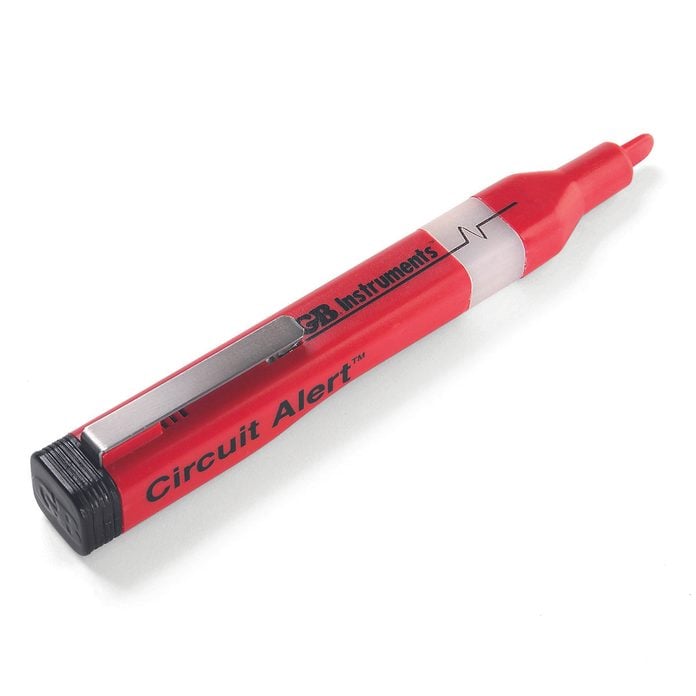
Step 2
Test the Receptacles
- Test receptacles with an electrical outlet tester to make sure they're off before removing them.
- Turn the power off to the outlet.
- Shove the electrical outlet tester nose into the narrow (hot) slot of the receptacle.
- Note: The tester will light and chirp continuously if the power is still on.

Step 3
Test for Hot Wires
- Test for hot wires inside a receptacle.
- Pull out the receptacle.
- Push the electrical outlet tester deep into the box to check for other hot wires.
- If you find them, turn them off at the main panel.
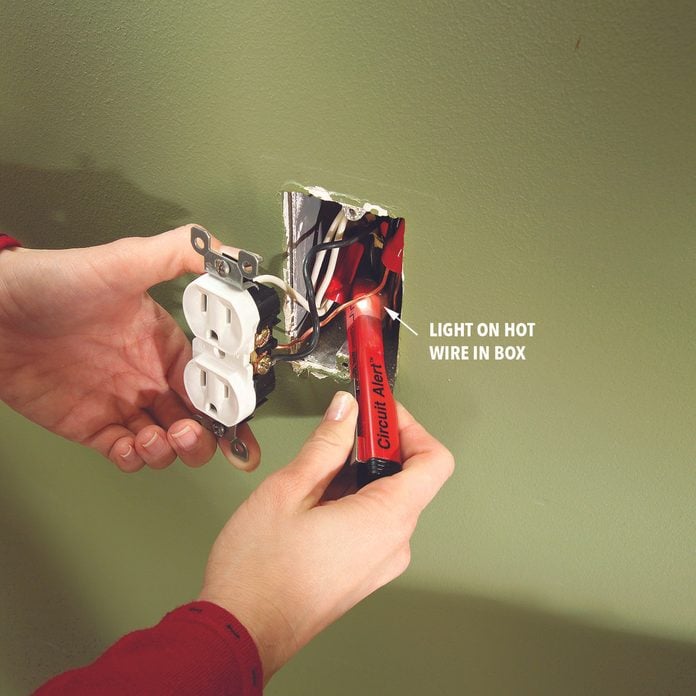
Step 4
Test Switches
- Test switches to make sure the power is off.
- Turn the power off at the main panel.
- Remove the cover plate.
- Push the tester nose close to one, then the other, of the two switch wire terminals to see if either wire is still hot.
- If there are no live wires, unscrew the switch, pull it out and test all other wires in the box.
- If there are multiple switches, check them all.
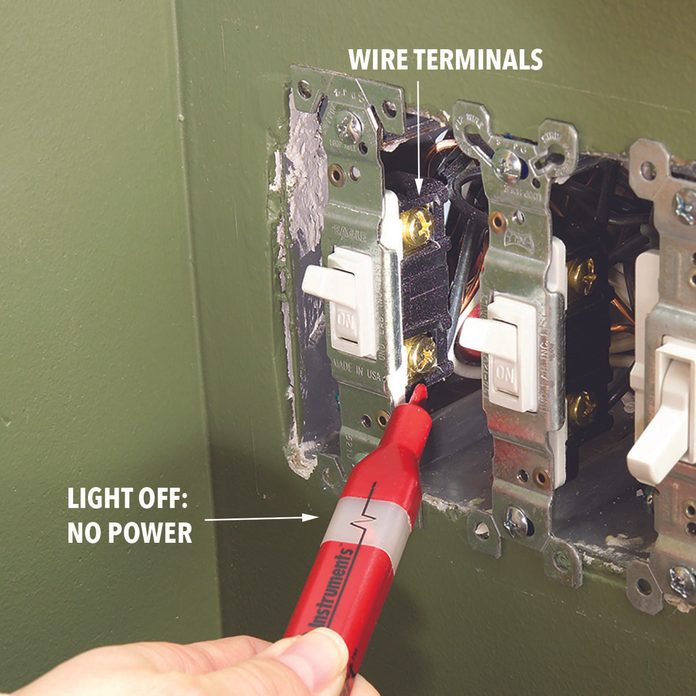
Step 5
Test Light Fixtures
- Remove the bulb and test the contact in the bottom of the socket for voltage.
- Make sure the light switch is in the 'on' position.
- If no voltage is present, unscrew the fixture from the electrical box.
- Pull it out and test the other wires in the box as before.

Step 6
Test Cables
- Use the electrical outlet tester to identify hot cables.
- Note: This test method is for plastic-sheathed cables only, so that you can turn those circuits off before sawing or drilling around them.
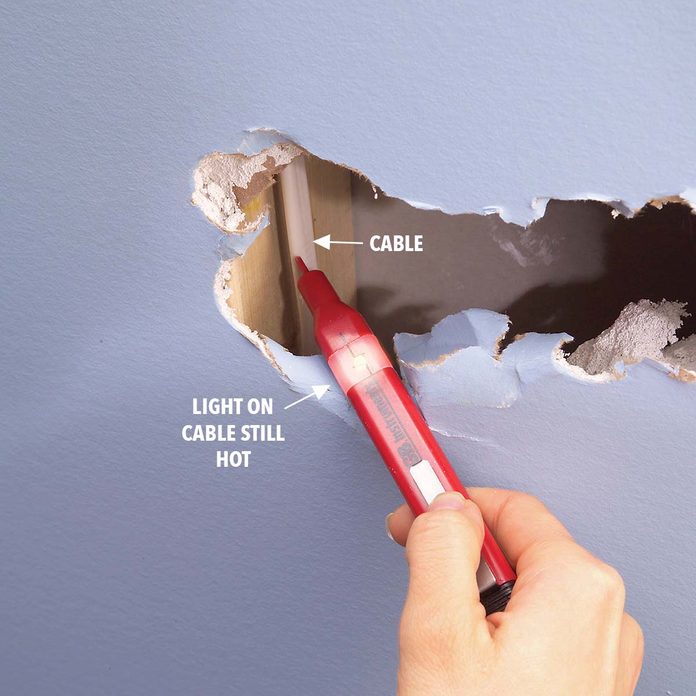
Check Your Batteries
This electrical outlet tester is powered by small batteries, so make sure it works before using it. Shove the tip into the slots of a receptacle that's live, hold it near a plugged-in lamp cord or hold it against a light bulb that's on. With most testers, you'll see a series of flashes and hear continuous chirps that indicate voltage. Testers may flash and chirp at other times, but without the continuous pattern that indicates a hot wire.
Step 7
Use a Circuit Tester to Test for Good Grounding
- This is the most reliable tool to tell if a circuit is complete.
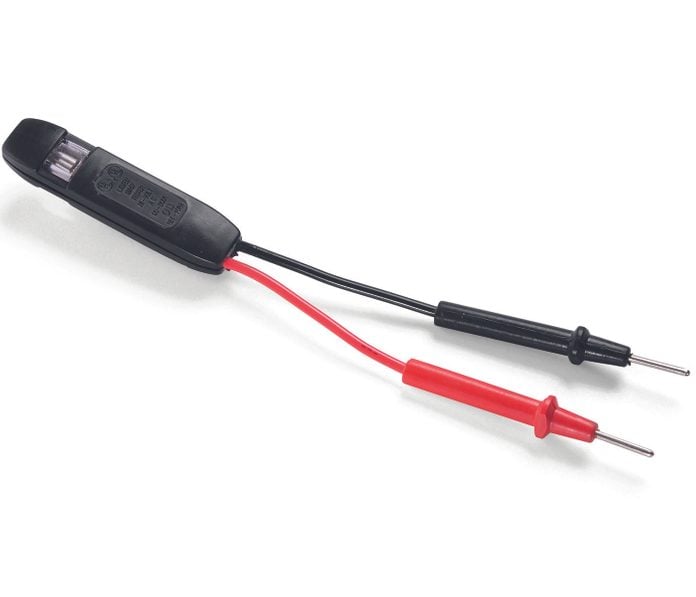
Step 8
Test Ground Wires
- Disconnect and separate the wires to a device with the circuit off.
- Turn the circuit back on.
- Touch the hot wire with one lead and the ground wire with the other lead.
- Note: The light will come on if the ground is good.

Step 9
Test Metal Boxes
- Test whether a metal box is grounded by using the same procedure as above.
- Touch the metal box instead of the ground wire with the second lead.
- Note: If the tester lights up, the box is grounded.
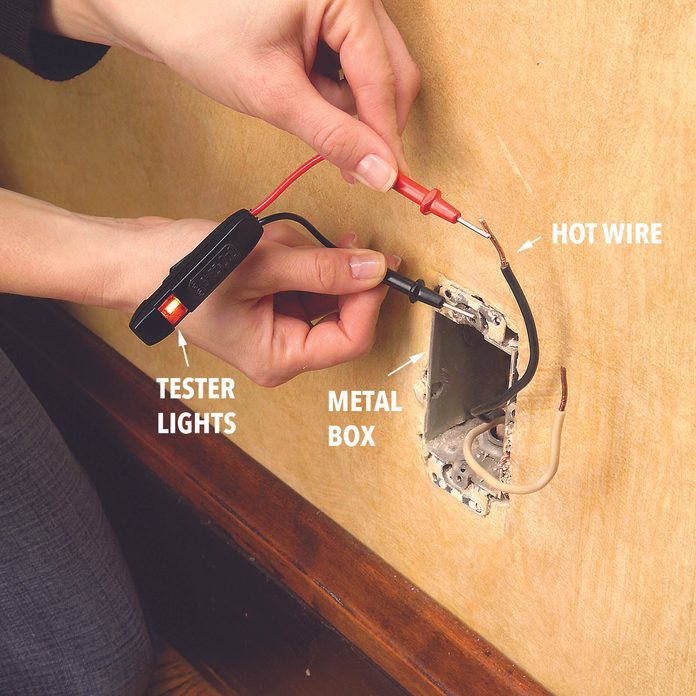
More on Using a Two-Lead Circuit Tester
The two-lead circuit tester shown here also tests for voltage. When you touch a live hot wire (black or any other color except green and white) with one lead and a neutral (white) or ground (green or bare copper) with the other, the neon test lamp should light. It confirms that the power is on and that you have a complete (good) circuit. If the light doesn't come on, either the power is off or you have a bad circuit.
This tool comes in especially handy in older homes when you want to know if an equipment ground wire (green insulated or bare copper) is actually connected to ground elsewhere in the system.
You often have to check this when you replace older ungrounded switches with grounded ones as now required by the National Electrical Code. You often find an unused bare ground wire folded back into the box, and you have to test it to make sure that it's connected to the rest of the grounding system before hooking up your new switch.
CAUTION: Avoid touching a live hot wire and don't let it touch anything else. Hold the tester leads by the insulated portion while making contact. And turn the circuit off again as soon as you finish the test.
Step 10
Use a Continuity Tester to Identify Wires and Test Switches
- This is a safe tool that allows you to trace wiring and test switches.
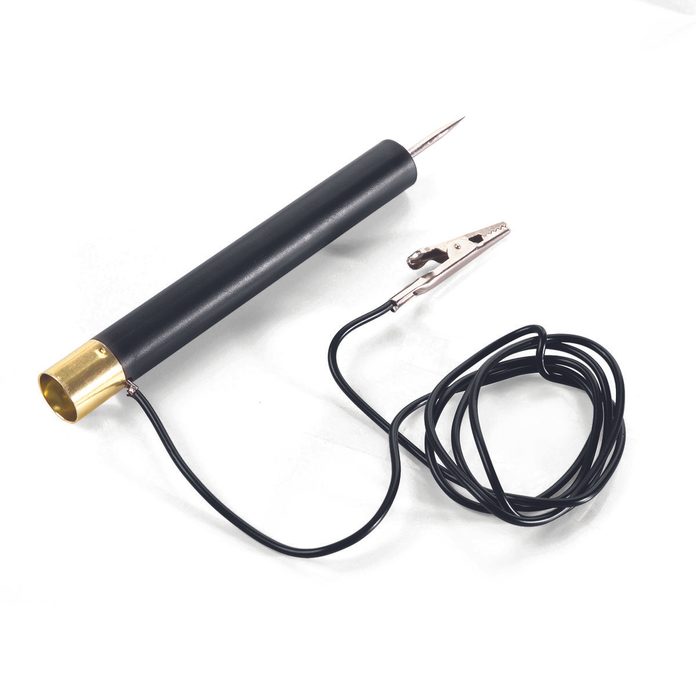
Step 11
Identify Remote Wires
- Attach the clip to the wire and probe other wires with the pointed end until the tester lights.
- Note: The electrical power should be off.
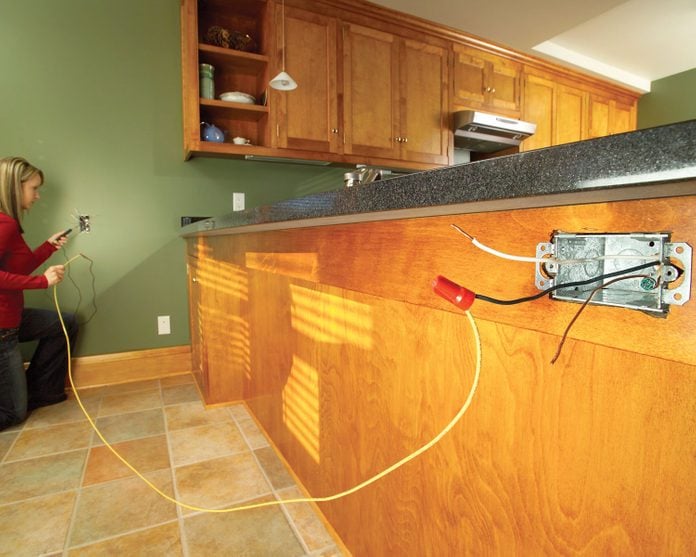
Step 12
Use a Test Wire
- Clip the lead to the test wire.
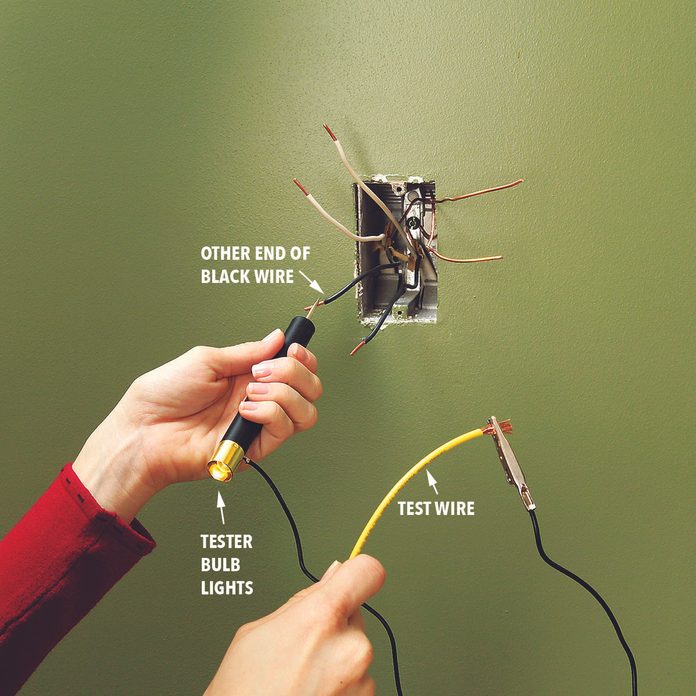
Step 13
Test Switches
- Remove the switch.
- Clip one lead to one switch terminal.
- Touch the point to the other terminal and flip the switch on and off.
- Note: The tester light will go on and off if the switch is good.
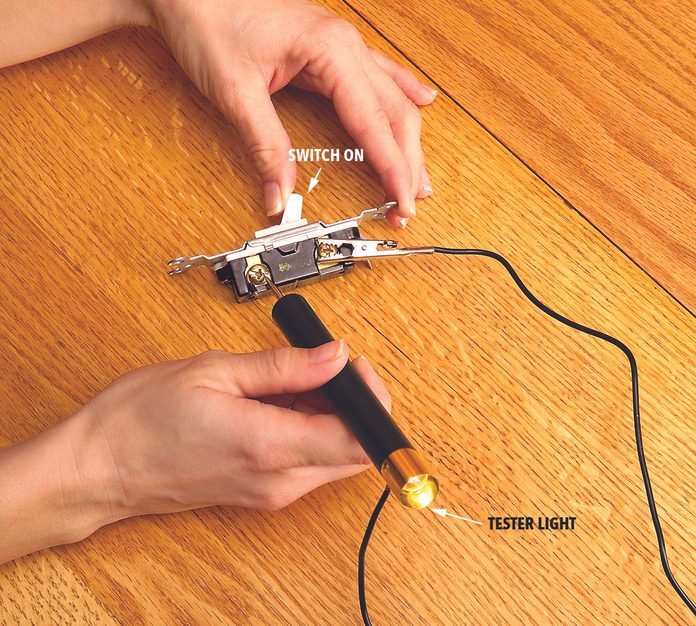
It's difficult and dangerous to trace the routes of various wires with circuits turned on. A continuity tester does it simply and safely with the circuits turned off. It has a probe, which contains a battery and a light bulb, and a wire lead. When you touch the ends to any continuous conductive path, usually a wire, with both the probe and the lead, a circuit will be complete and the bulb will light. In fact, to test the bulb to make sure it's working, simply touch the lead to the probe.
Working with several boxes and can't remember which wire goes where? With the power shut off, simply connect a test wire to a circuit wire in one box, clip the lead to the test wire and touch the probe to the ends of the circuit wires in the other box. The bulb will light when you find the right wire.
Another great use for the circuit tester is to determine whether a switch is working. Disconnect the switch, connect one lead to one terminal and put the probe on the other while you flick the switch on and off. If the switch is good, the bulb should light up and turn off as well.
CAUTION: If you have aluminum wiring, don't mess with it. Call in a licensed pro who's certified to work with it. This wiring is dull gray, not the dull orange that's characteristic of copper.
Originally Published: November 23, 2020
Source: https://www.familyhandyman.com/project/how-to-use-cheap-electrical-testers/
0 Response to "Using Continuity Tester to Determine Switch Loop"
Enregistrer un commentaire